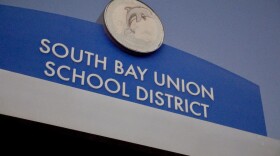CARSON CITY, Nev. (AP) -- Lake Tahoe and the environmental perils it faces will be back in the spotlight Monday as hundreds of leading scientists, elected officials and environmentalists convene for an annual forum touting successes and identifying new challenges that threaten its famed clear waters.
Former Vice President Al Gore, who for decades has warned of the perils of climate change, will give the keynote address at Sand Harbor State Park, with the lake's aqua marine waters and majestic ring of mountains as a backdrop.
Gore and then-President Bill Clinton attended the first Lake Tahoe Summit in 1997, and Clinton signed an unprecedented, long-range plan to protect the lake that straddles the Nevada-California line and was once described by Mark Twain as "the fairest picture the whole earth affords."
That forum, orchestrated by U.S. Sen. Harry Reid of Nevada, capped months of workshops with cabinet officials, business owners, scientists, environmentalists and local government representatives to identify threats to the Sierra Nevada lake.
Tahoe's waters were once so clear that a white Secchi dish -- used by scientists to measure water transparency -- was visible to a depth of 102 feet.
That was in the 1960s. But by the mid-1990s, clarity had declined by 30 feet and scientists warned the lake would turn murky green within a few decades unless immediate steps were taken.
"Ten years ago, just talking about clarity, the rate of decline was pretty constant year after year," said Geoffrey Schladow, director of the University of California, Davis Tahoe Environmental Research Center.
"We've stopped the constant loss of clarity," he said.
A recent report on the state of the lake showed that Tahoe experienced an amazing rebound in 2012, marking a second straight year of improvement. Clarity averaged a depth of 75.3 feet, a 6.4-foot improvement from a year earlier.
Scientists acknowledge that two dry winters helped. Winter runoff carries water-clouding sediments and nutrients into the lake. Less snow means less runoff.
Schladow said the real challenge "is to be able to sustain improvements when nature is working against us."
Lake Tahoe was once difficult to get to in winter, but it's now a year-round playground and draws millions of visitors to its ski slopes, casinos, beaches and rugged outdoors.
Everything in the Tahoe Basin -- from car exhaust and dust to storm runoff and air particulates -- eventually ends up in the lake and feeds the growth of algae.
The first summit spurred a public-private partnership that has invested nearly $1.7 billion in the Basin for environmental projects. Besides ongoing scientific research, those efforts have included storm water runoff controls along more than 600 miles of roadways; treating more than 54,000 acres of forest to reduce the risk of catastrophic wildfires; and restoring nearly 16,000 acres of wildlife habitat, including 1,500 acres of streams and wetlands in the upper watershed wetlands that help filter pollutants before runoff gets to the lake.
About 24 acres of the lake have been treated to remove invasive weeds and Asian clams, while nearly 30,000 watercraft have been inspected and 10,000 decontaminated to keep invasive species out of Tahoe.
Earlier this month, Reid and Sen. Dean Heller of Nevada and Sens. Dianne Feinstein and Barbara Boxer of California introduced the Lake Tahoe Restoration Act, a measure that seeks the reauthorization of $415 million to continue environmental work.
Schladow said another challenge is to quantify "which projects are having the greatest effect and which ones don't have as large an effect as proponents would like."
"It's an ongoing process," he said. "A lot of these projects have only gone in in the last five or six years. Every year that goes by, we're getting a sense of how these things work."
It remains to be seen whether Tahoe's clarity can be restored to its historic depths.
"I think it's possible," Schladow said, but achievement will require long-term commitment.
"It's not going to be quick," he said. "It's not going to happen in 10 years, not even 20 years.
"It's a decision that has to be carried on by the next generation."






